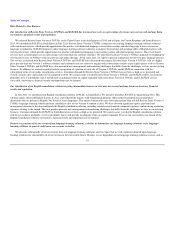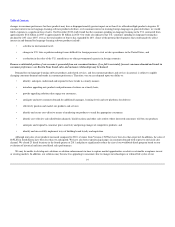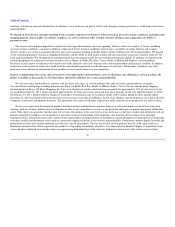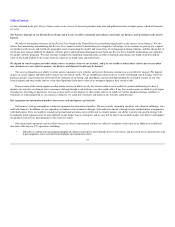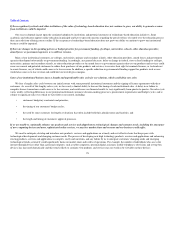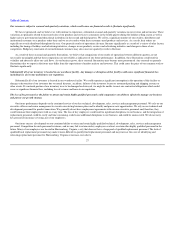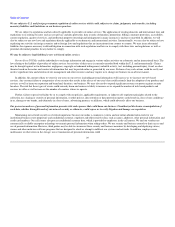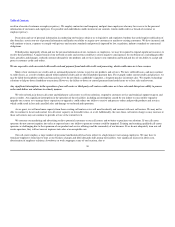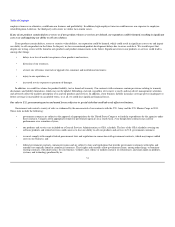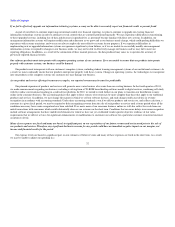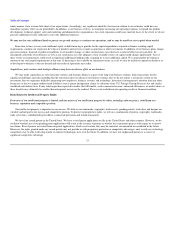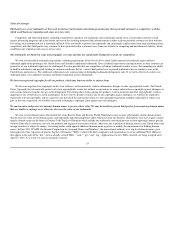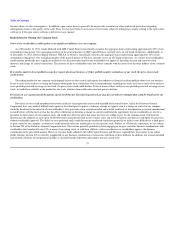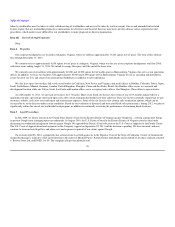Rosetta Stone 2011 Annual Report Download - page 30
Download and view the complete annual report
Please find page 30 of the 2011 Rosetta Stone annual report below. You can navigate through the pages in the report by either clicking on the pages listed below, or by using the keyword search tool below to find specific information within the annual report.
Table of Contents
hiring replacements in other higher cost of living cities such as Arlington, Virginia or Boulder, Colorado.
In addition, wage inflation and the cost of retaining our key personnel in the face of competition for such personnel may increase our costs faster than we
can offset these costs with increased prices or increased sales volume.
Our kiosk business generates significant revenues, and if we are unable to successfully reposition our kiosk business, or hire, train, motivate and retain
sales personnel to staff our kiosks, or to identify suitable locations and negotiate site licenses on acceptable terms, we could lose revenue, our costs could
increase and our profitability could decline.
The number of worldwide kiosks decreased 33% from 259 as of December 31, 2010 to 174 as of December 31, 2011. In 2012, based on our evaluation of
historical and forecasted kiosk sales performance, we plan to significantly reduce the size of our worldwide kiosk program, in addition to continually
reviewing the performance of remaining kiosk locations.
In order to successfully generate revenues from our kiosk program we must be able to hire, train, motivate and retain sales personnel to staff these kiosks.
Our kiosks are small and widely dispersed, and, as such, are operated without substantial hands-on management or oversight by us. As a result, we depend on
our kiosk sales personnel to effectively manage sales, customer issues and reporting of financial transactions from these kiosks. The success of our kiosks will
depend upon various additional factors, including our ability to negotiate site licenses on acceptable terms and on negotiating acceptable labor costs. We must
identify and negotiate cost-effective site licenses for kiosk locations that will generate sufficient consumer demand. Many of these site licenses contain terms
and conditions that are highly favorable to licensors including allowing licensors to cancel them on short notice, sometimes as little as thirty days, and broad
indemnification terms in favor of licensors. If competition for kiosk space increases, license fees may increase and other terms may become even less
favorable to us, resulting in lower profitability. Our failure to properly manage the repositioning of this sales channel could cause us to lose revenue and
increase our expenses.
Failure to maintain the availability of the systems, networks, databases and software required to operate and deliver our internet-based products and
services could damage our reputation and cause us to lose revenue.
We rely on internal systems and external systems, networks and databases maintained by us and third-party providers to process customer orders, handle
customer service requests, and host and deliver our internet-based language-learning solutions, including our online language courses and Rosetta Stone
TOTALe, and our SharedTalk online peer-to-peer collaborative and interactive community. Any damage, interruption or failure of our systems, networks and
databases could prevent us from processing customer orders and result in degradation or interruptions in delivery of our products and services.
Notwithstanding our efforts to protect against interruptions in the availability of our e-commerce websites and internet-based products and services, we do
occasionally experience unplanned outages or technical difficulties. In addition, we do not have complete redundancy for all of our systems. We do not
maintain real-time back-up of all of our data, and in the event of system disruptions, we could experience loss of data which could cause us to lose customers
and could harm our reputation and cause us to face unexpected liabilities and expenses. If we continue to expand our business, we will put additional strains
on these systems. If we move additional product features to online systems or more of our business online, all of these considerations will become more
significant. We may also need to grow, reconfigure or relocate our data centers in response to changing business needs, which may be costly and lead to
unplanned disruptions of service.
28


